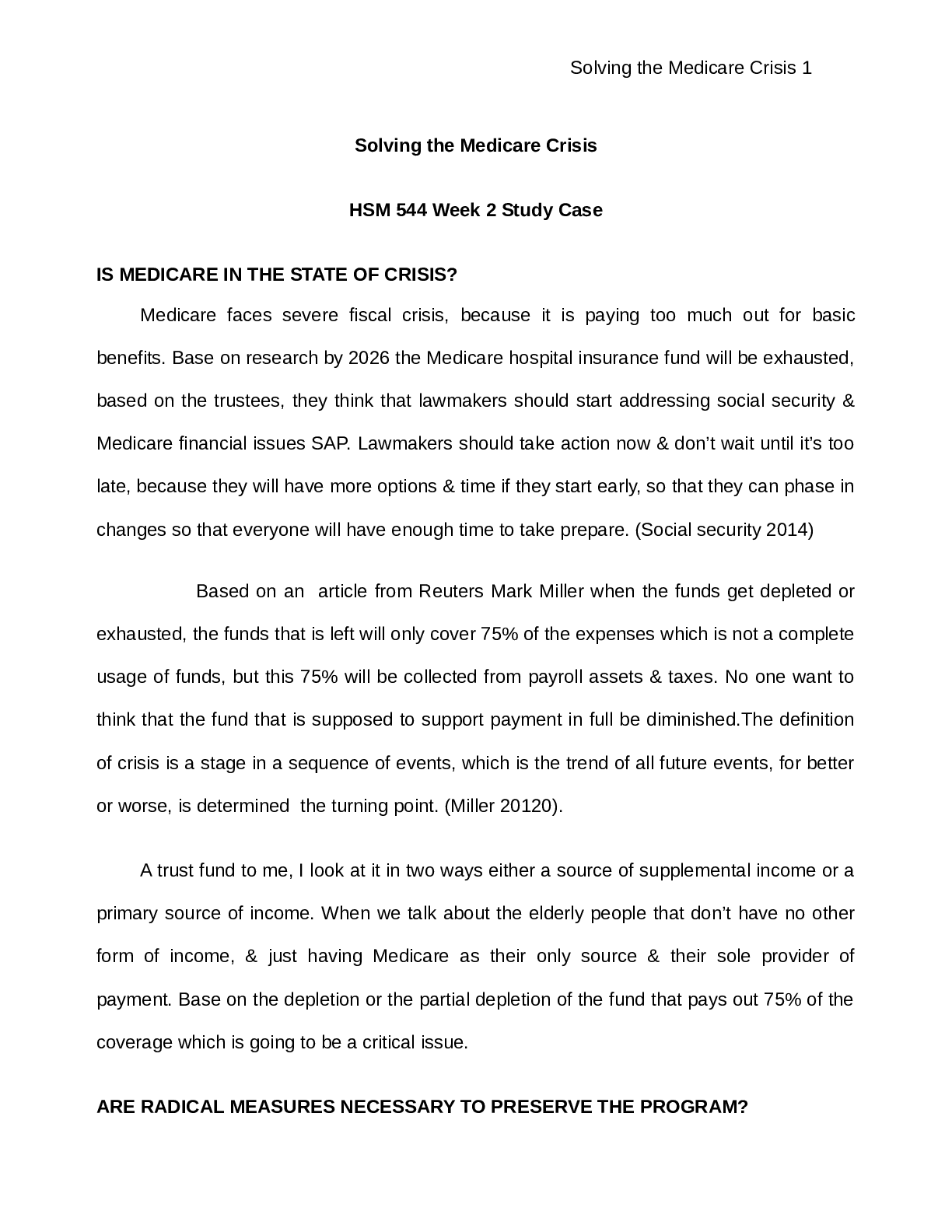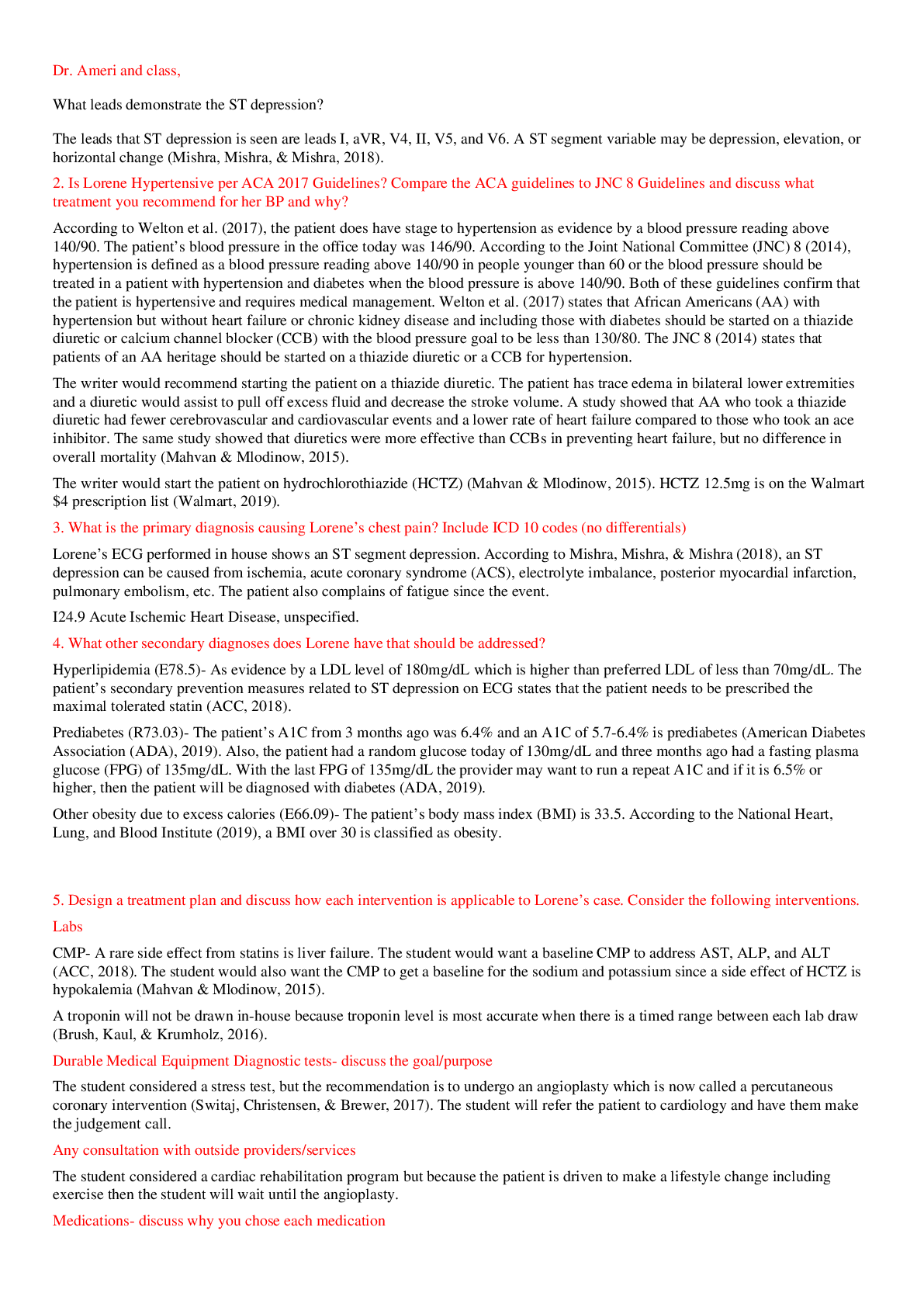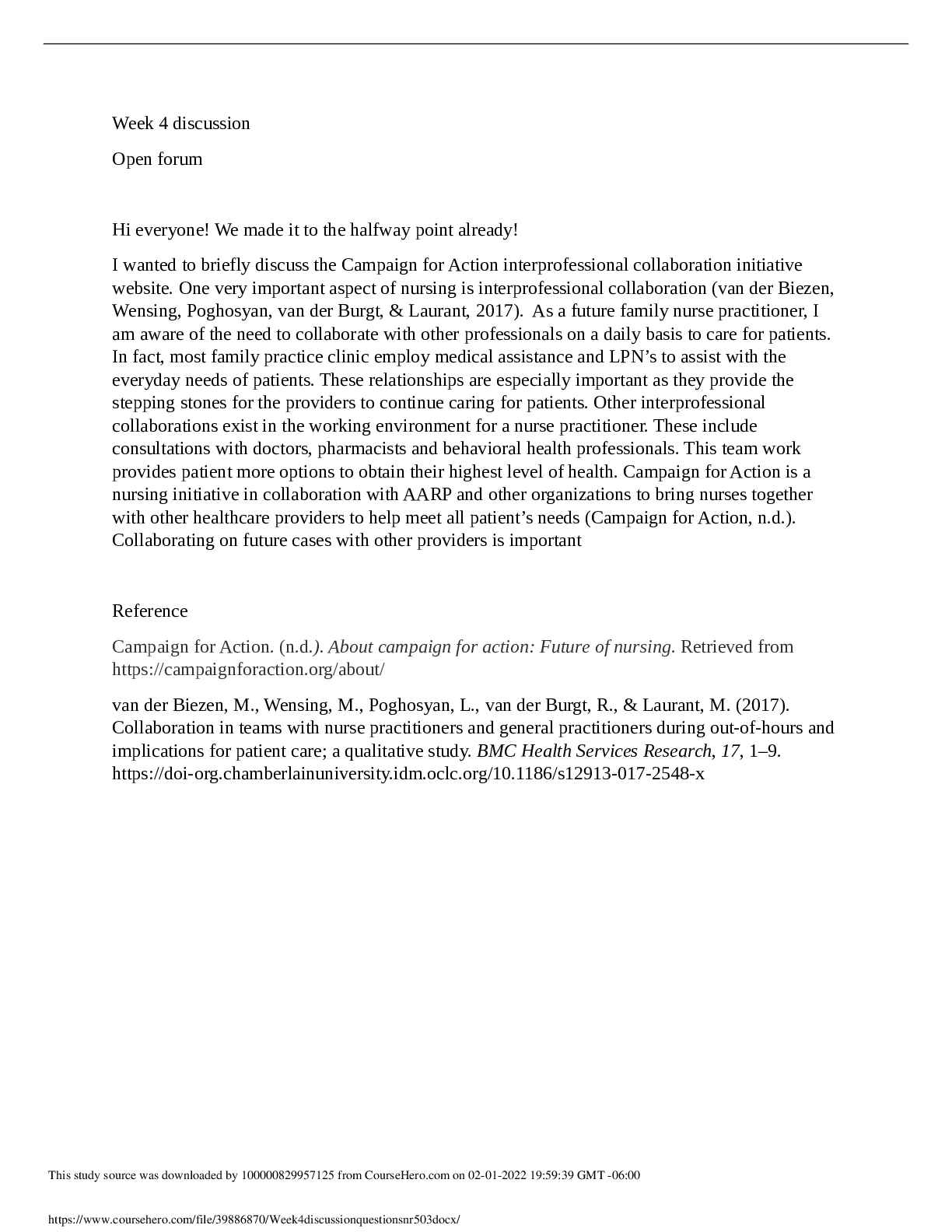*NURSING > DISCUSSION POST > NR 603 Week 2 Case Discussion Pulmonary Part 2 follow up Visit (All)
NR 603 Week 2 Case Discussion Pulmonary Part 2 follow up Visit
Document Content and Description Below
NR 603 Week 2 Case Discussion Pulmonary Part 2 follow up Visit physical exam and new diagnoses. Initial post includes the most likely diagnosis/specific treatment plan given case study information ... supported by rationale and answers all questions presented in the case. Demonstrates course knowledge/assigned readings by: linking tests/interventions accurately to diagnoses, applies learned knowledge specifically to the symptoms and patient information using original dialogue **************************************** Hello Dr.and class, Week 2 Case Discussion Pulmonary - Part 2 Michelle’s asthma is well controlled on Singular 10mg daily, and Albuterol as needed 1-2 times per week. She still continues to work in the bakery and presents to the clinic with an acute that started two days ago. Her respiratory rate is 24 and complains of mild shortness of breath with exertion. Her oxygen saturation (O2 Sat) was 94% on room air and complaints of inspiratory and expiratory wheezing. She states that her Temperature (Temp) days have been 101 to 102-degree Fahrenheit over the last 2days; and Influenza A is going around the bakery. Her cough is productive of white sputum. The exam findings show Michelle appears her stated age; is alert and oriented; calm but having mild work of breathing. Her current Heat Rate (HR) is 110 beats per minute (bpm), Blood Pressure (BP) is 150/85, Respiration Rate (RR) is 24, Temp is 101.4-degree Fahrenheit, and the apical rate is elevated at 110. Her cough is now dry and nonproductive. She has mild shortness of breath, a fair chest expansion, positive inspiratory and expiratory wheezes, no rales, no rhonchi. On auscultation, no thrills, gallops, or extra heart sounds are noted, so the physical exam is otherwise unremarkable. She was swabbed and tested positive for Influenza A (ICD-10-CM: J10.1). Based on these facts, aside from her chronic Asthma diagnosis, the most likely diagnosis for Michelle is Influenza A (Walia, Anderson, & Vincent, 2019). The Influenza A is a subgroup of the Influenza viral infection – a respiratory infection that that is manifested as fever, chills, aches and pains, cough, and sore throat (US Food and Drug Administration [FDA], 2017). 1. Determine appropriate treatment plan for Michelle. Discuss medications, doses, Durable Medical Equipment, and any testing, and apply these directly to her case. Provide your rationale with evidence. The appropriate treatment plan for Michelle revolves around the primary diagnosis of Influenza A. Usually Influenza A can be treated symptomatically. However, based on a history of having Asthma, it is important to treat the Influenza A with Oseltamivir (Tamiflu) to shorten the cause of the disease process in reducing the intensity of the disease on the patient (Doshi, Heneghan, & Jefferson, 2016). Thus, Tamiflu is a prescription medicine used to treat influenza in patients who are 2 weeks of age and older who have had flu-like symptoms for up to 2 days (FDA, 2017). Since the patient is within the two days’ time frame, Tamiflu will benefit Michelle in her recovery process. Because Michelle’s asthma is well controlled on the current treatment plan of a low-dose inhaled corticosteroid inhaler, Singular 10mg daily, and Albuterol as needed 1-2 times per week, I will maintain the same regimen for her Asthma. I will also add the following to her treatment plan to yield a more therapeutic health outcome. Imaging and Blood works: Chest Xray (CXR), and CBC Michelle stated in her description of the history of present illness that she had a productive cough, but in the assessment, she had a non-productive cough. So, I will obtain a chest x-ray to rule out Pneumonia (PNA). Also, I will check her complete blood count (CBC) and Complete Metabolic Panel (CMP) to rule out infection and to determine if the respiratory symptoms are of viral or bacterial etiology, especially since she's been febrile (Temp of 101 to 102-degree Fahrenheit) (Kennedy-Malone, Plank, & Duffy, 2019). Vaccination: influenza vaccine and Pneumococcal Vaccine Respiratory infections like influenza A are more serious for patients with asthma because they often can lead to PNA and/or acute respiratory disease (CDC, 2020). Also, patients who have asthma should also be up to date with pneumococcal vaccination to protect against pneumococcal diseases, such as pneumonia, bloodstream infections, and meningitis (CDC, 2020). So, if the patient, has not received her influenza vaccine and Pneumococcal Vaccine, then I will educate her on the importance of receiving it today (Weir, & Gruber, 2016; CDC, 2020). ............Continued.............. [Show More]
Last updated: 1 year ago
Preview 1 out of 10 pages
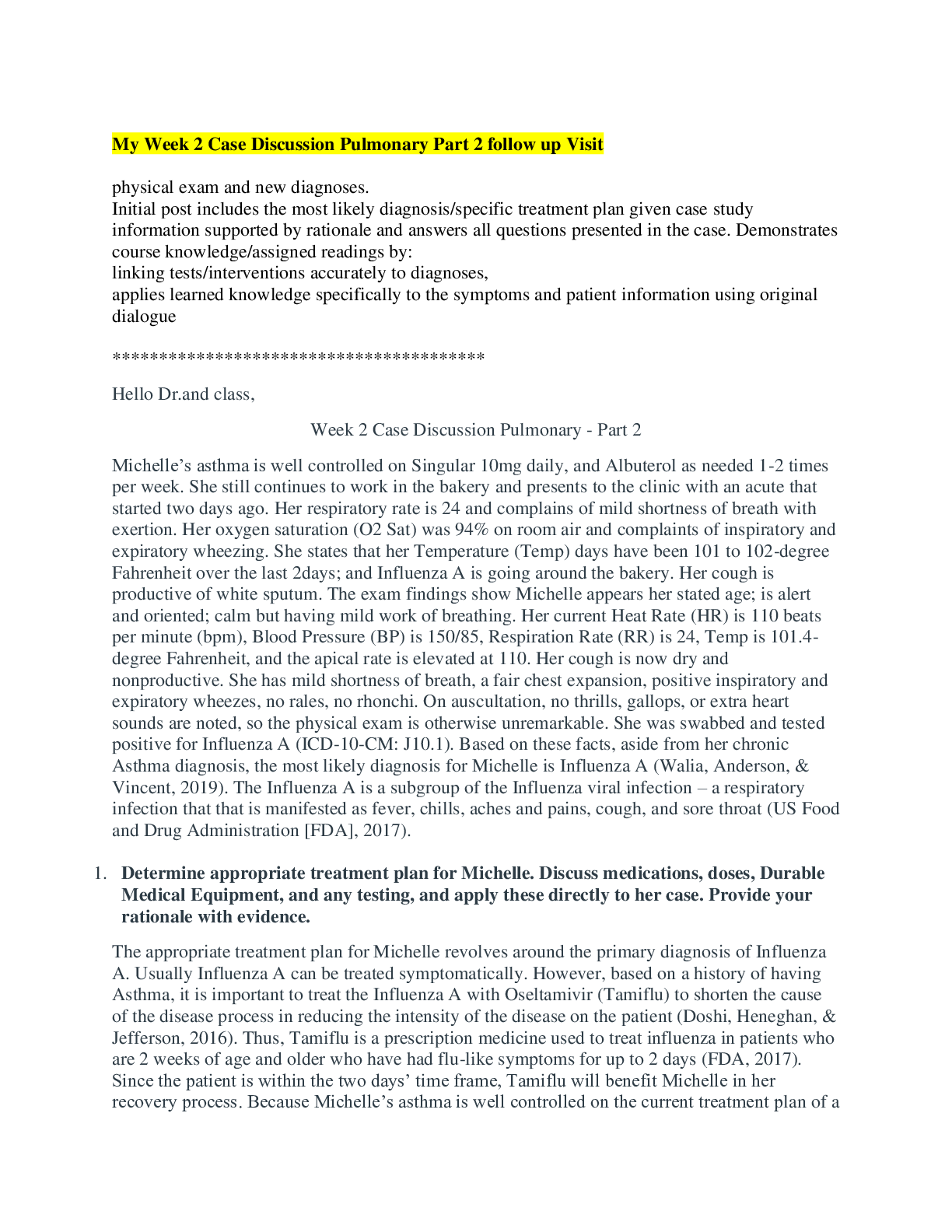
Reviews( 0 )
Document information
Connected school, study & course
About the document
Uploaded On
Feb 23, 2021
Number of pages
10
Written in
Additional information
This document has been written for:
Uploaded
Feb 23, 2021
Downloads
0
Views
55


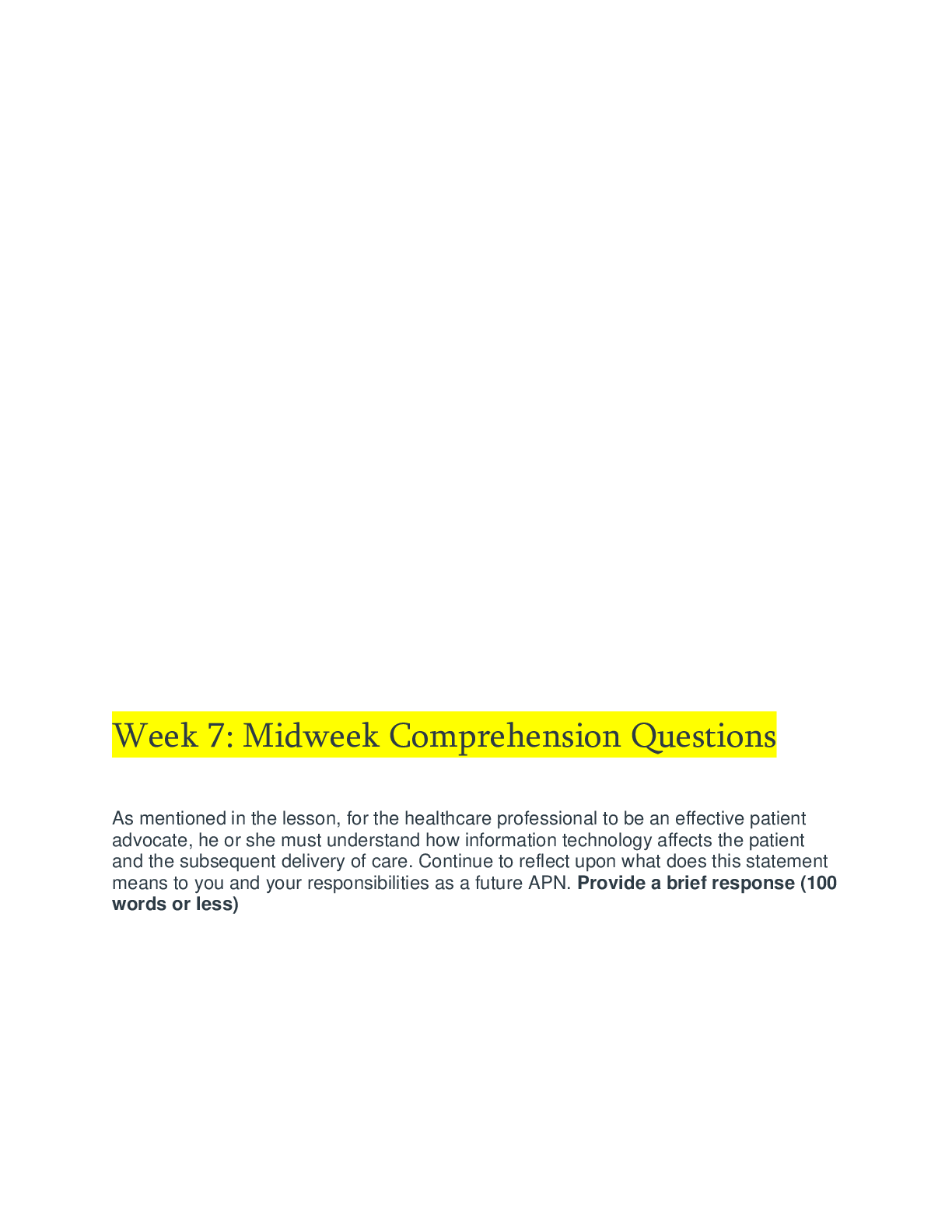


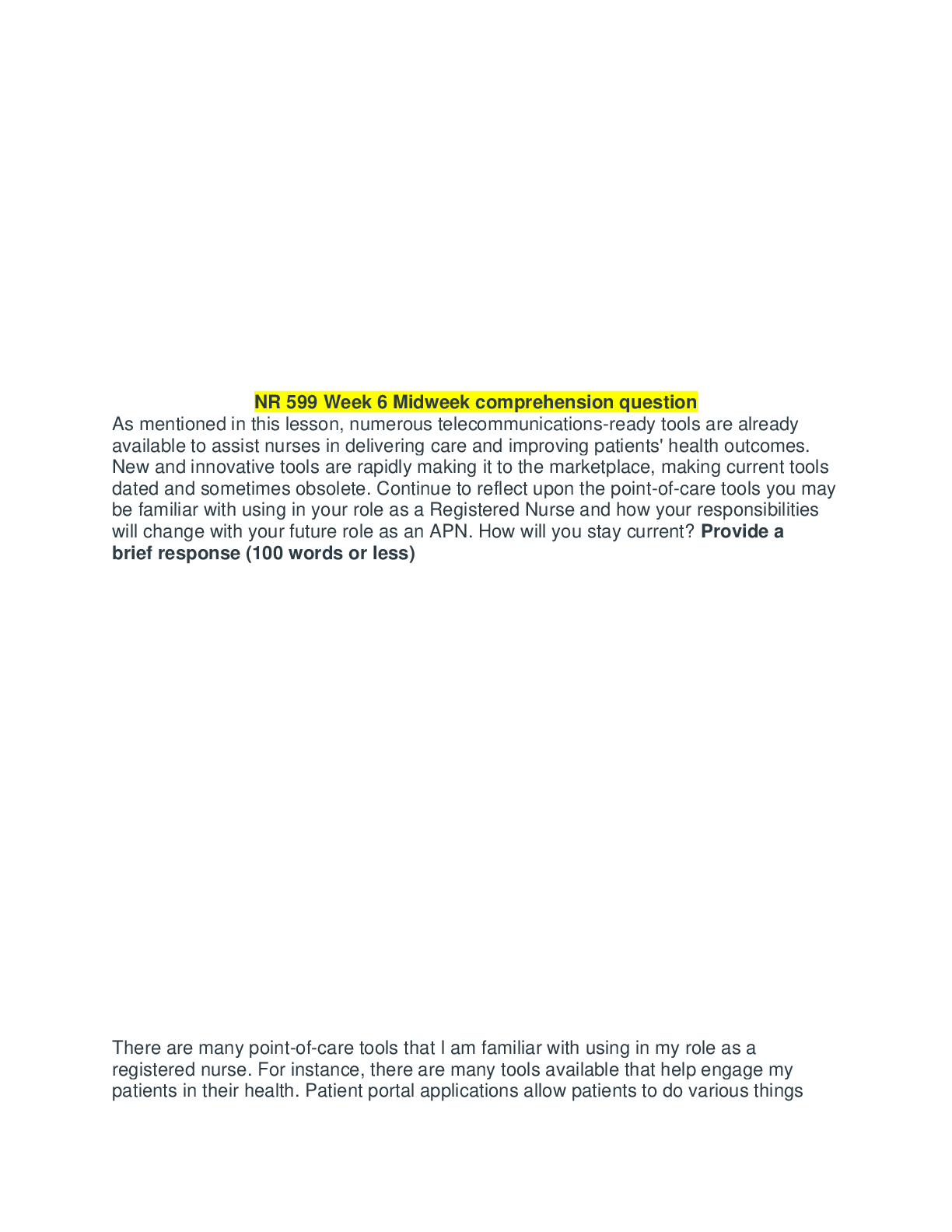
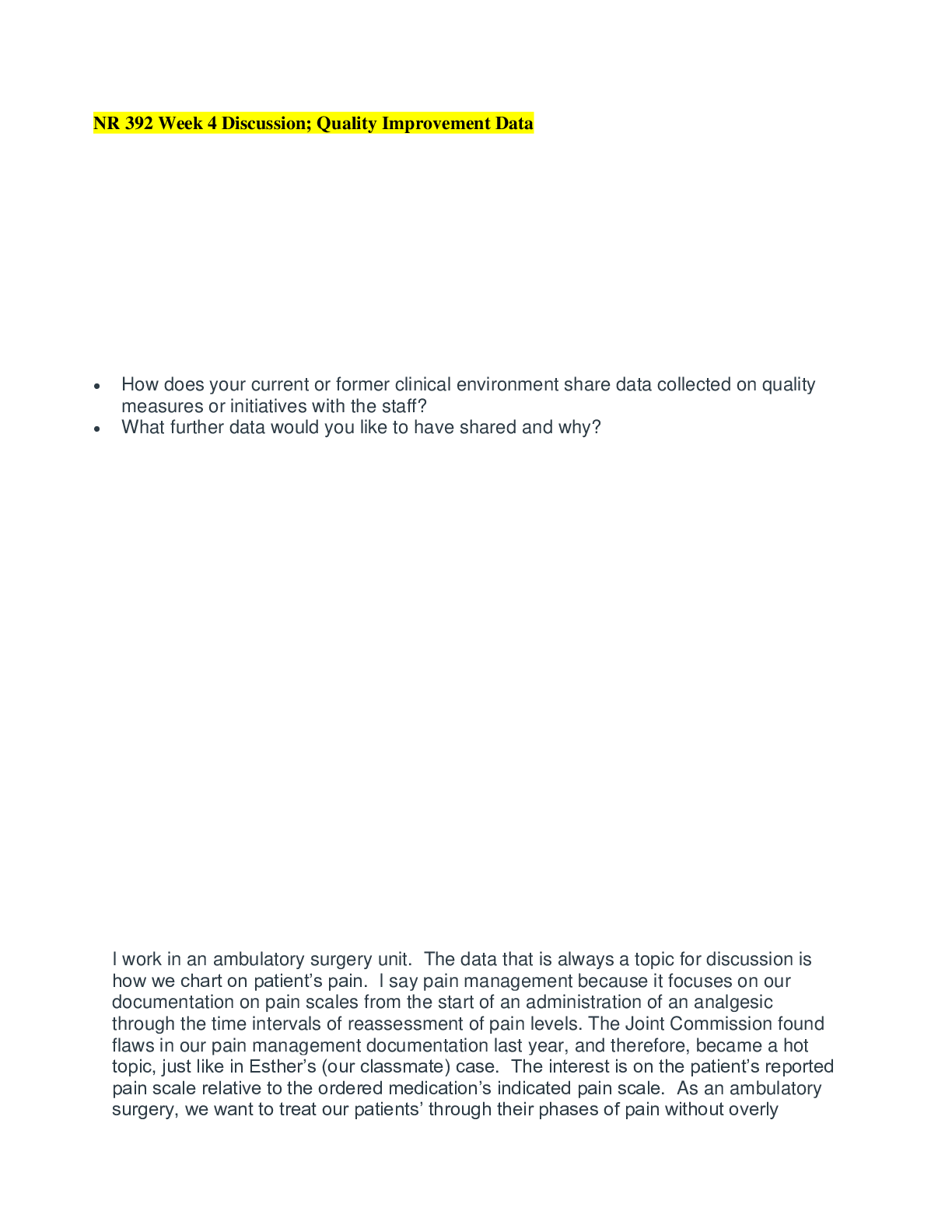
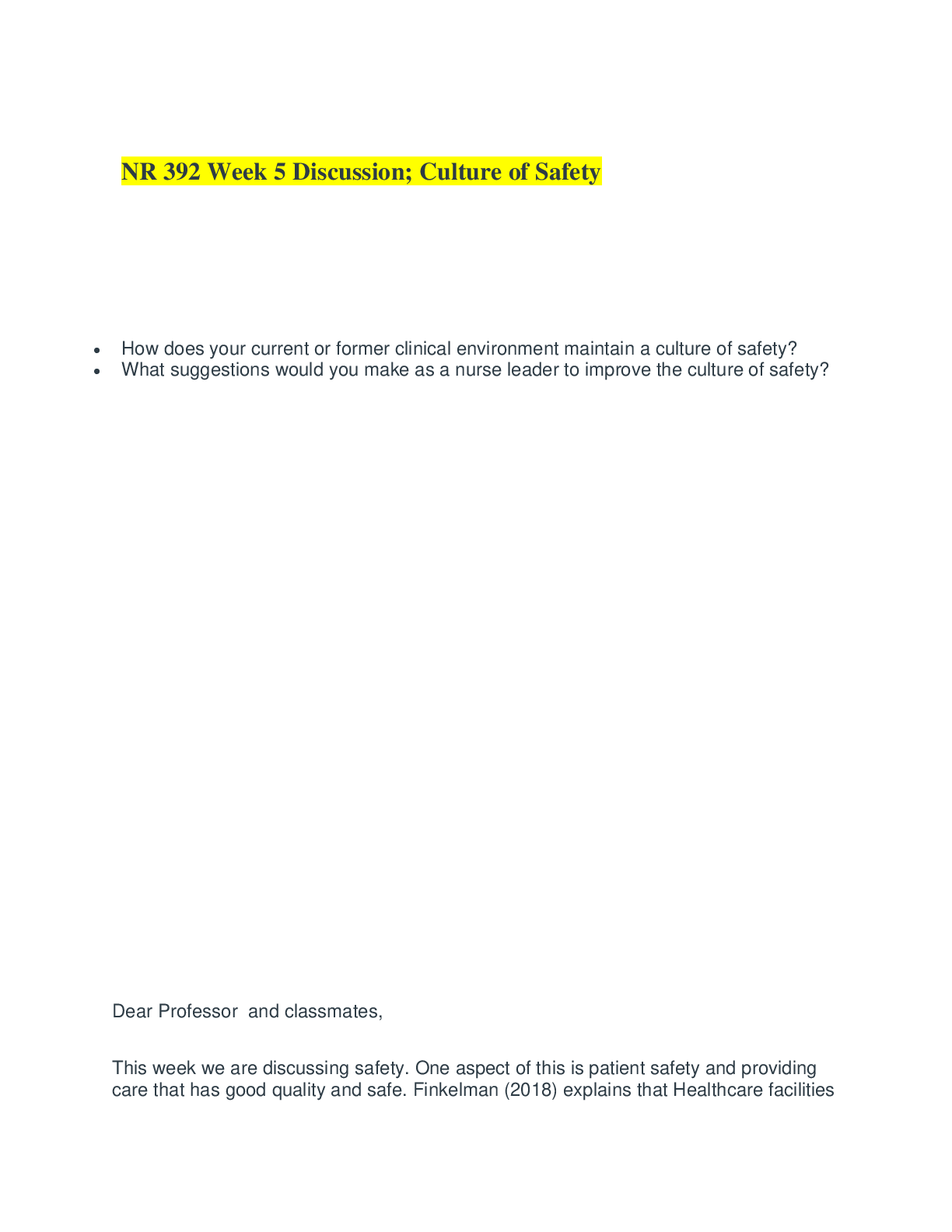
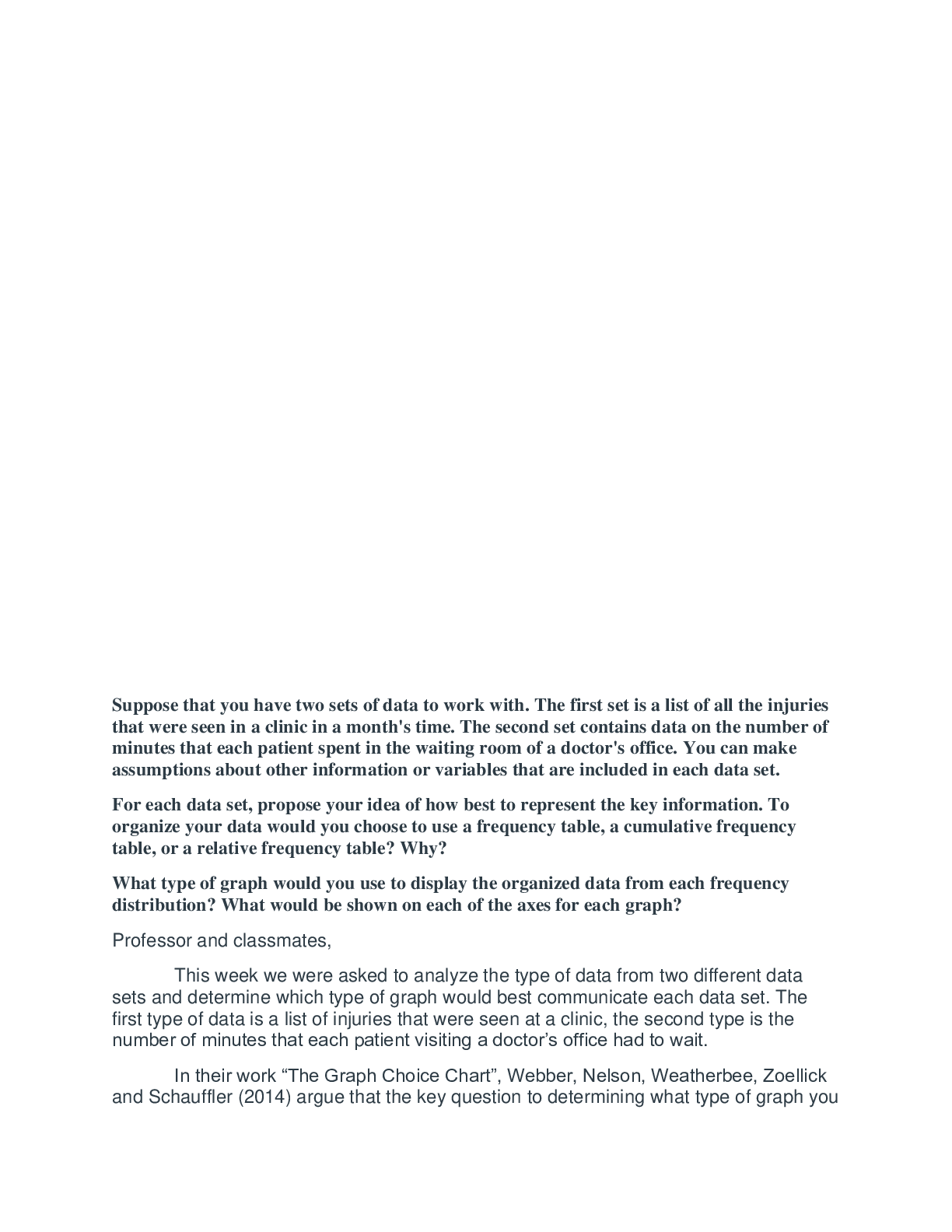
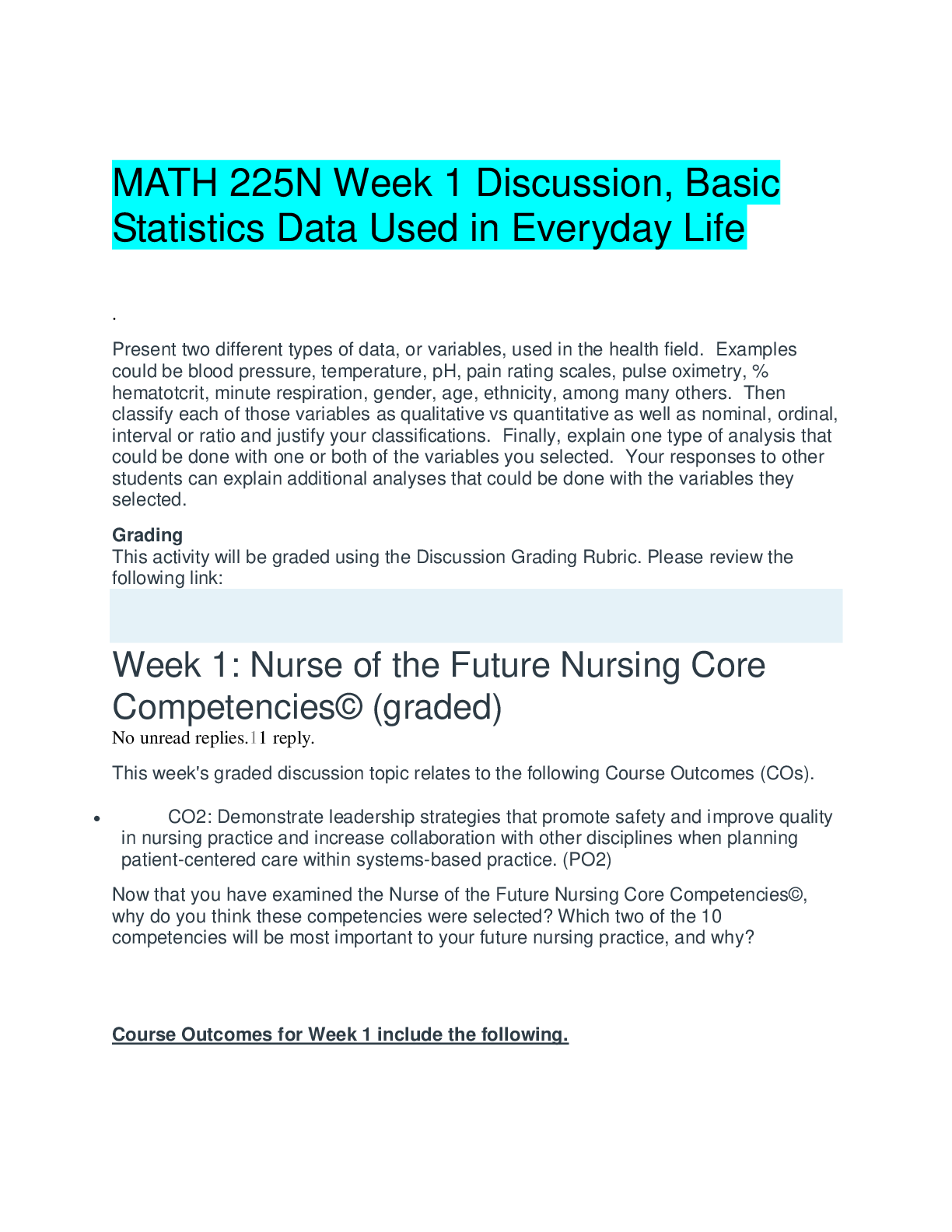
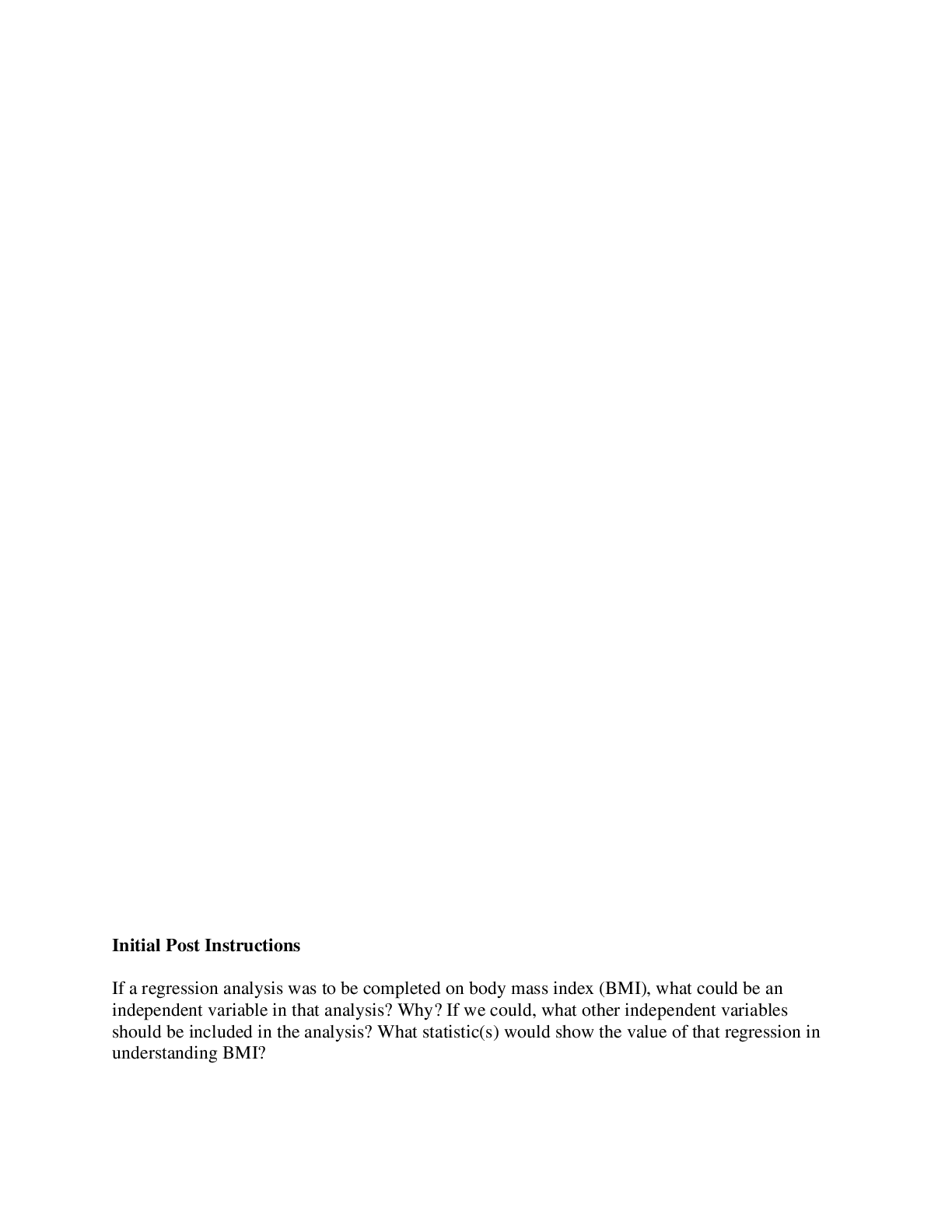
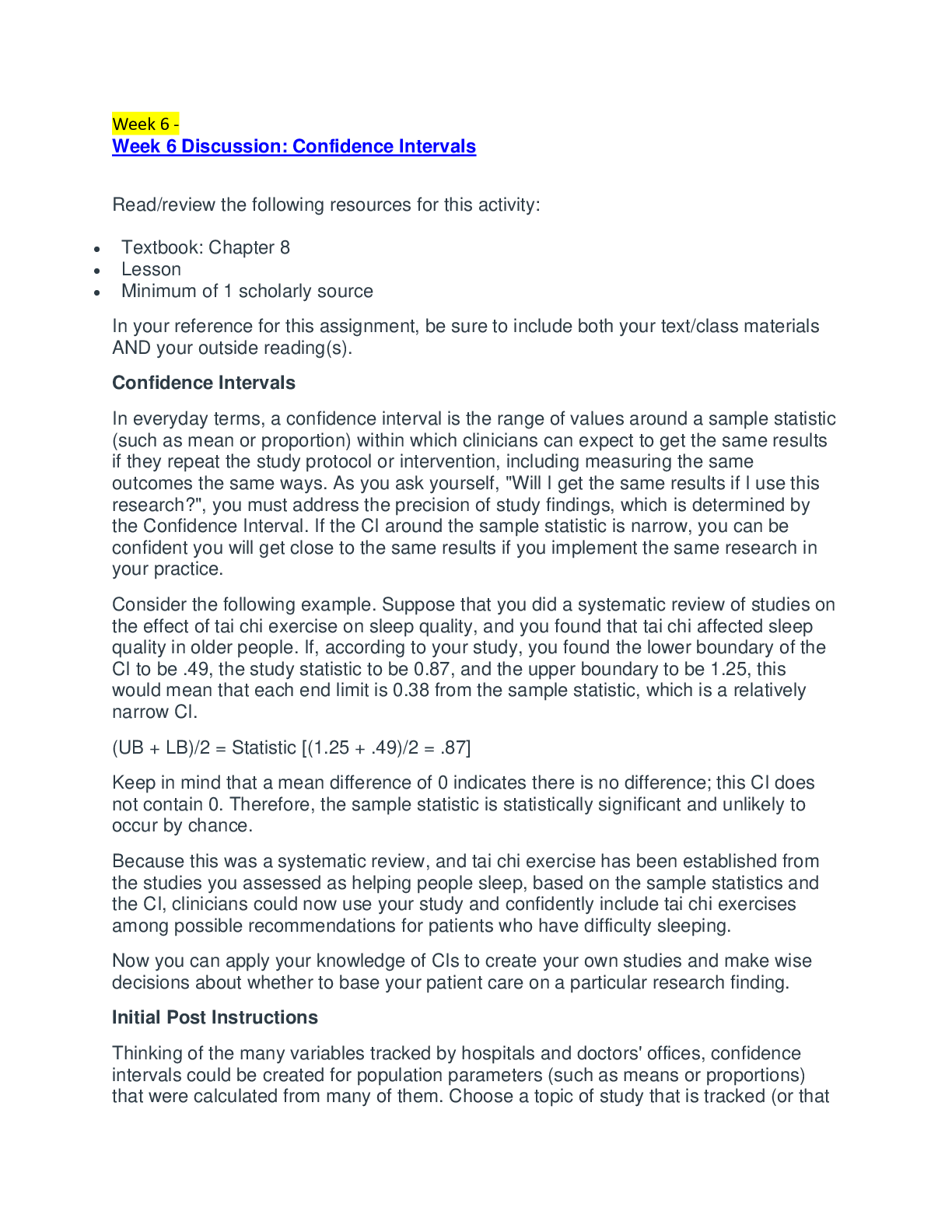
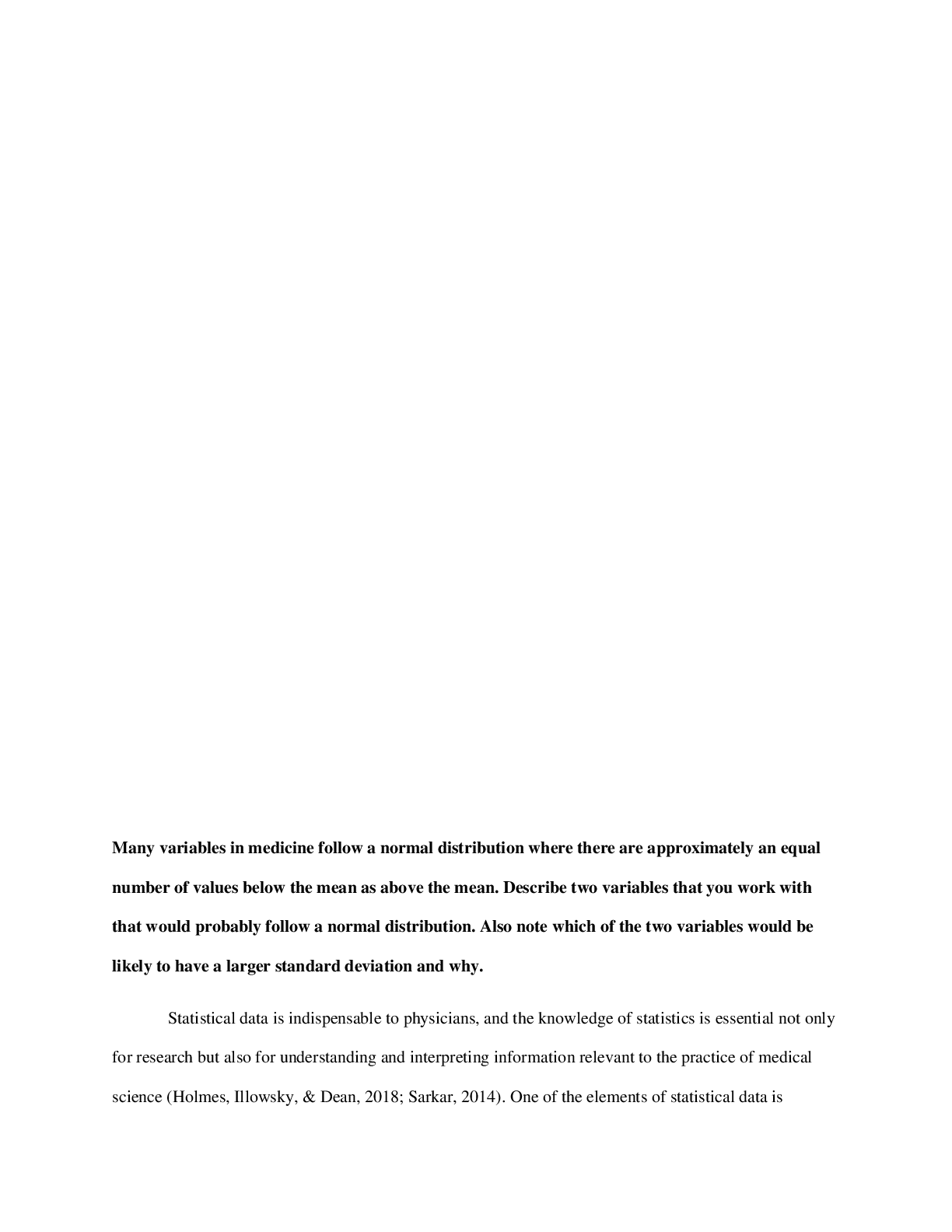
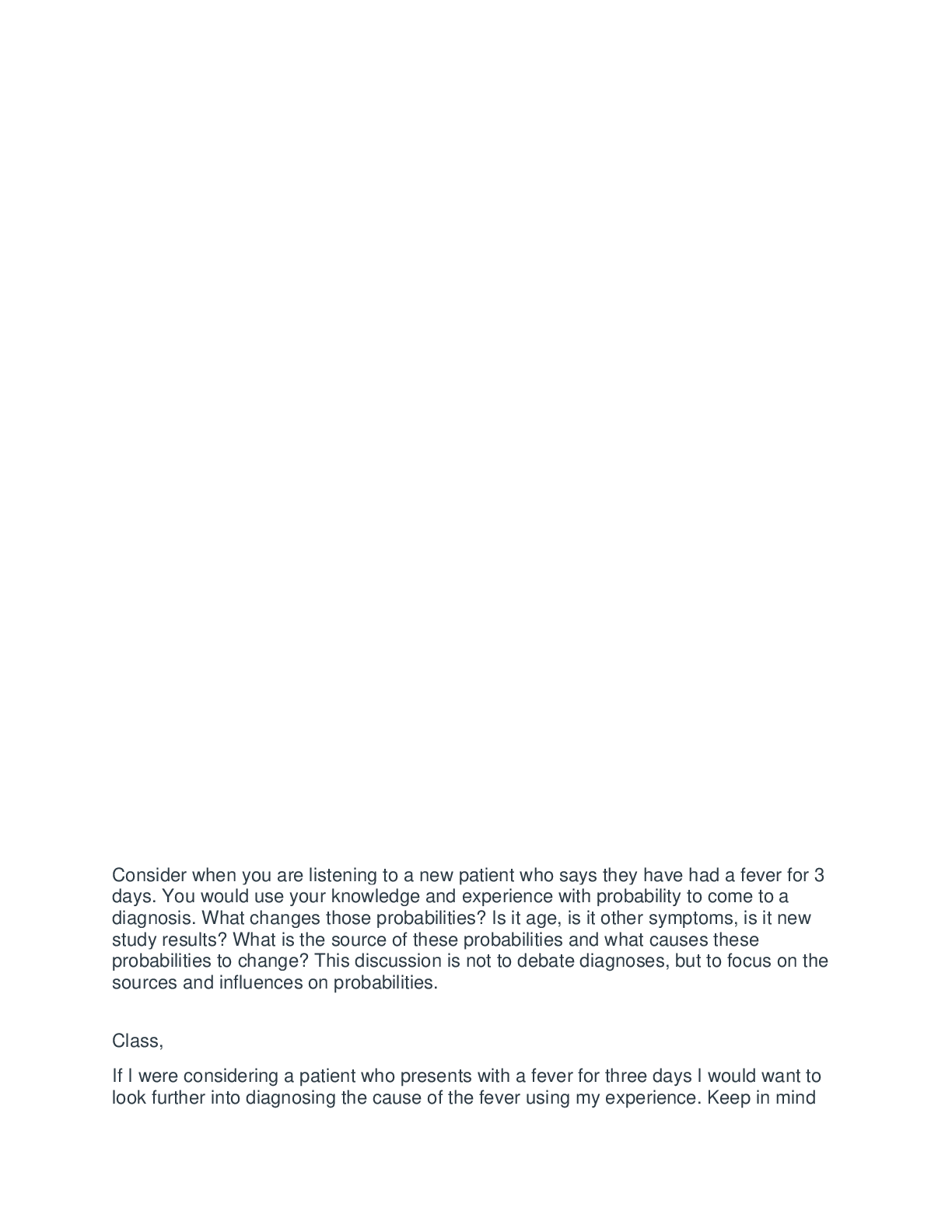
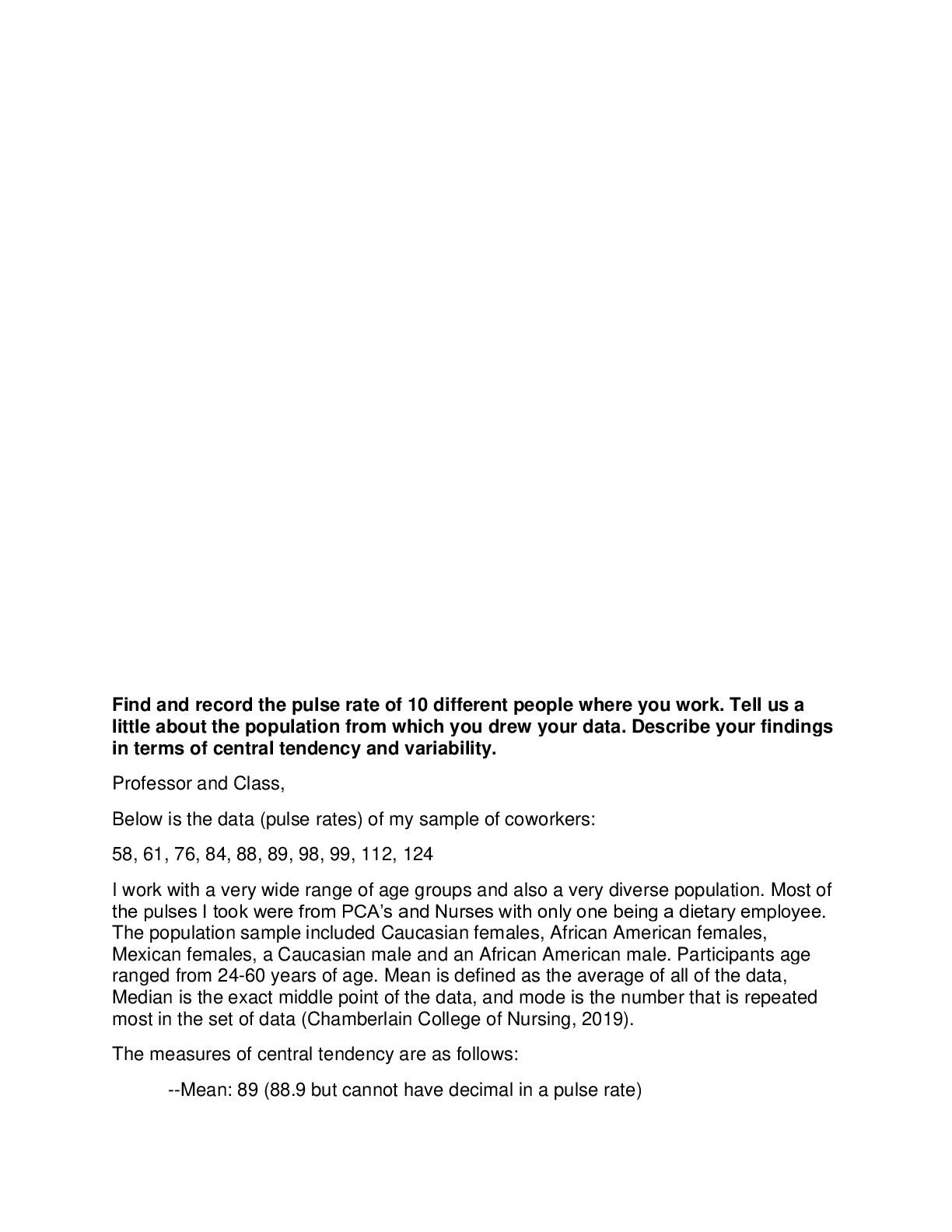
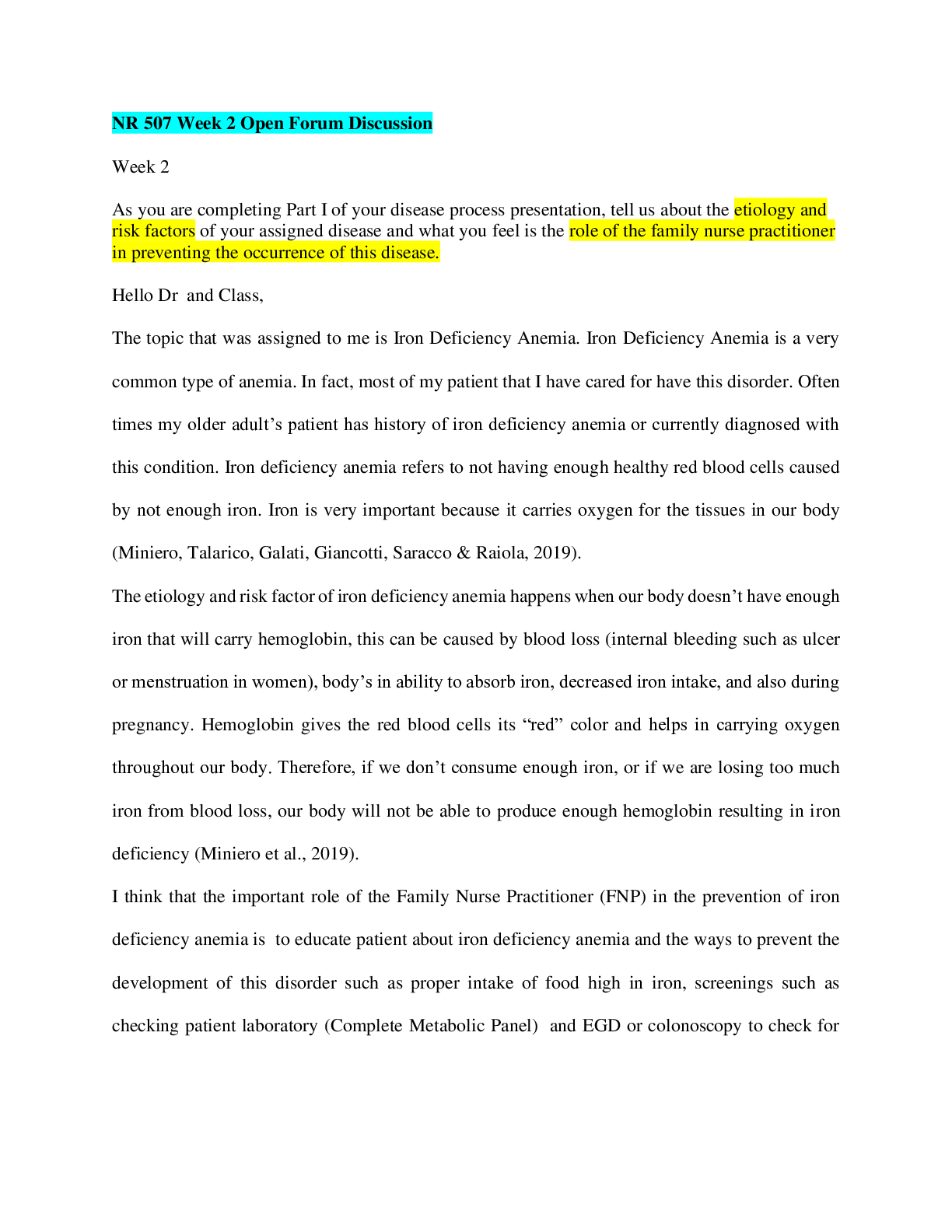
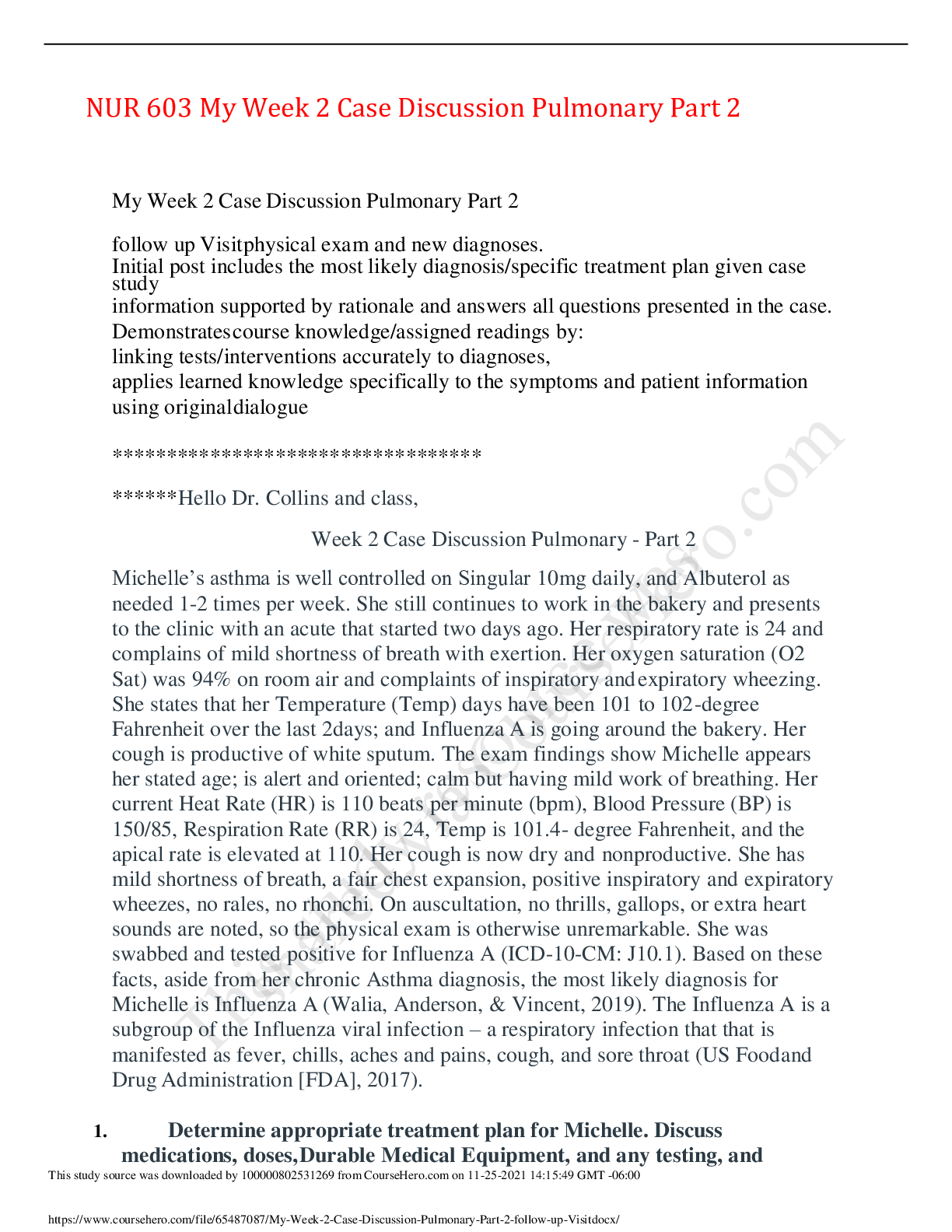

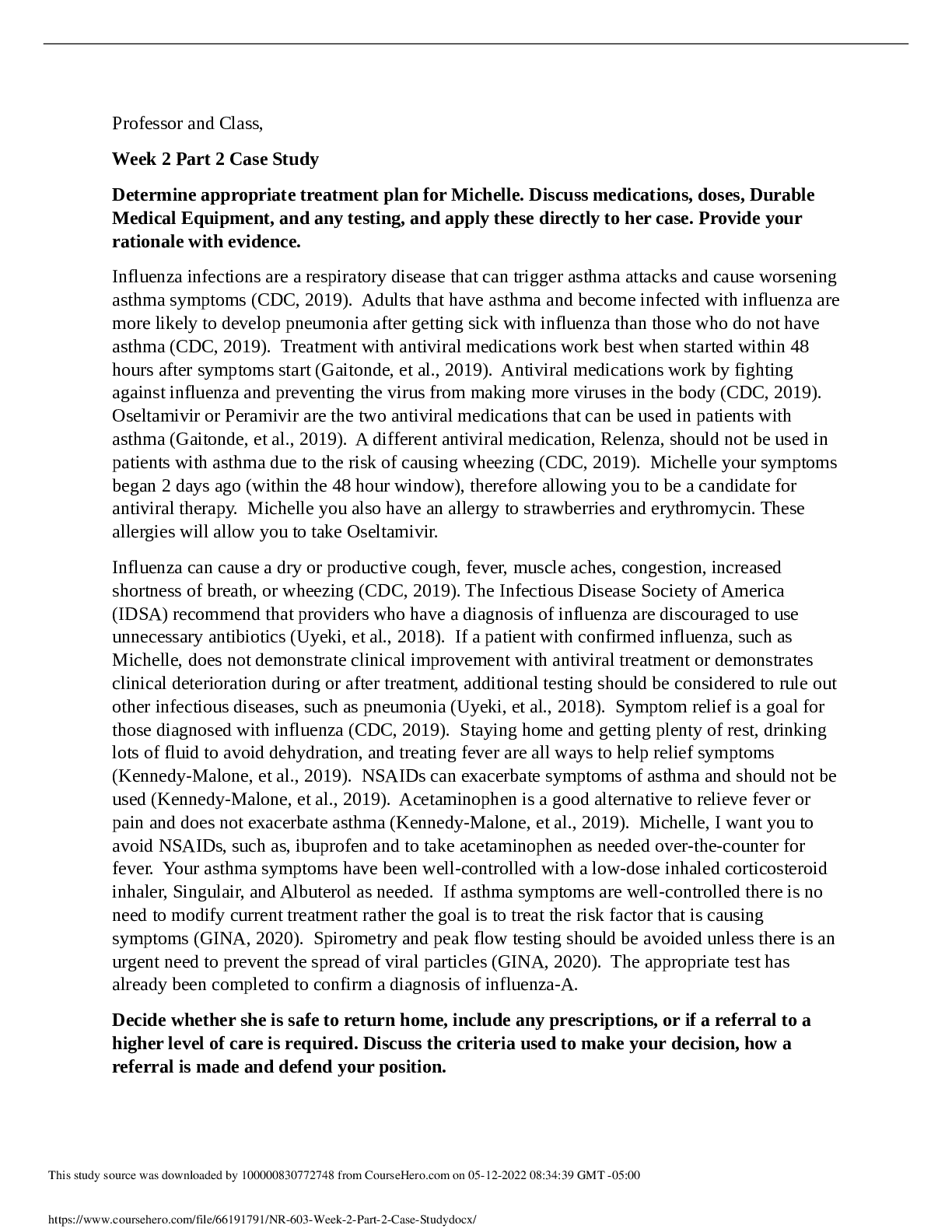
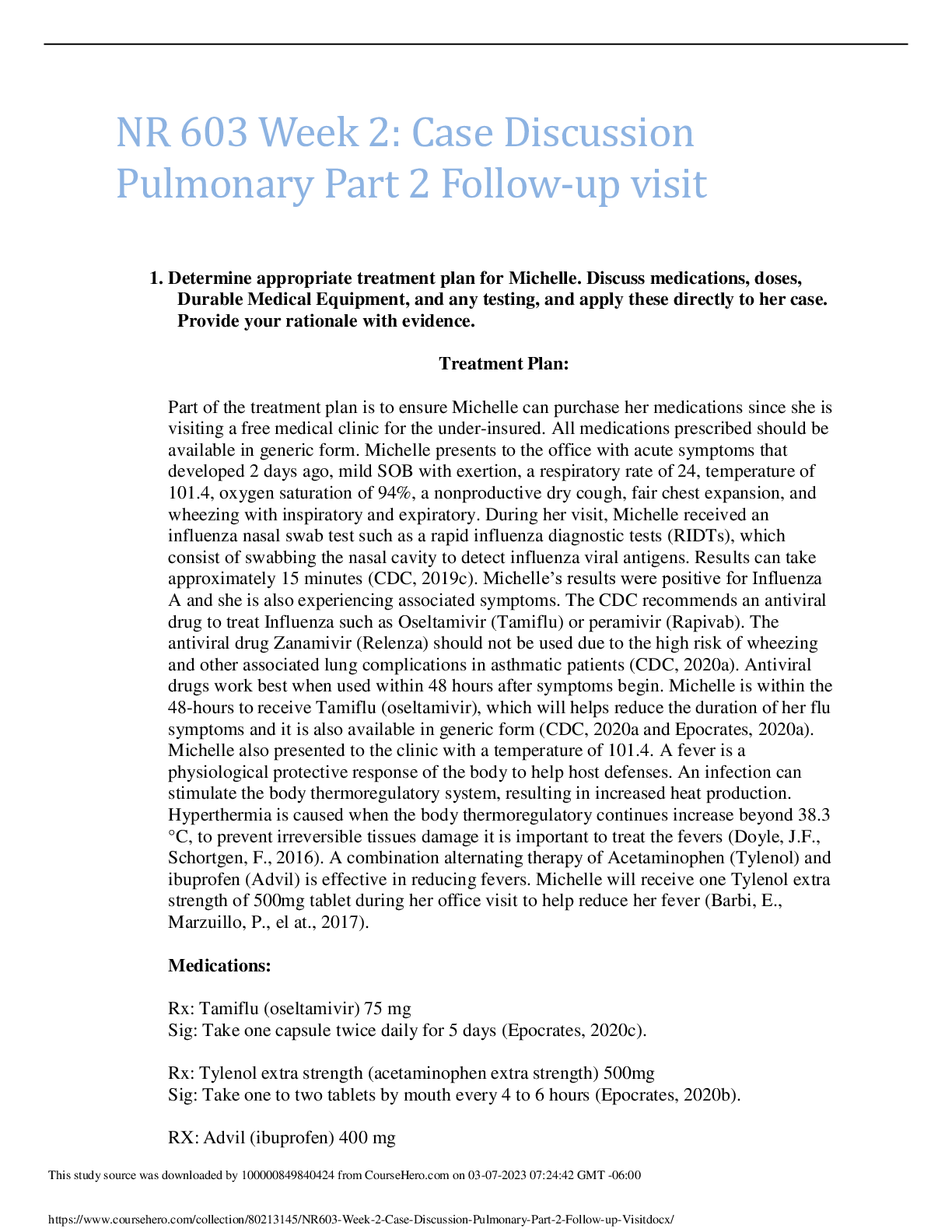
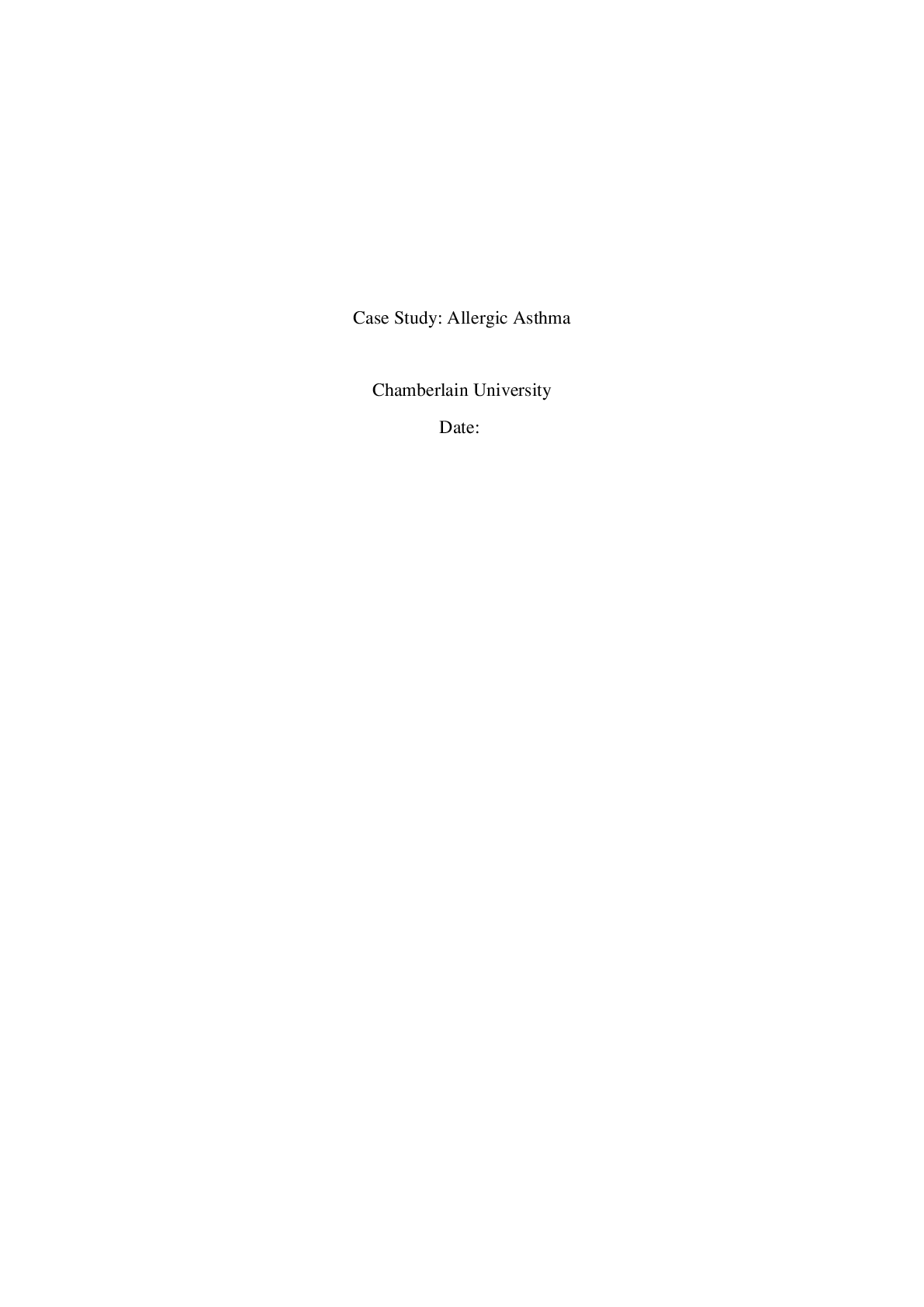
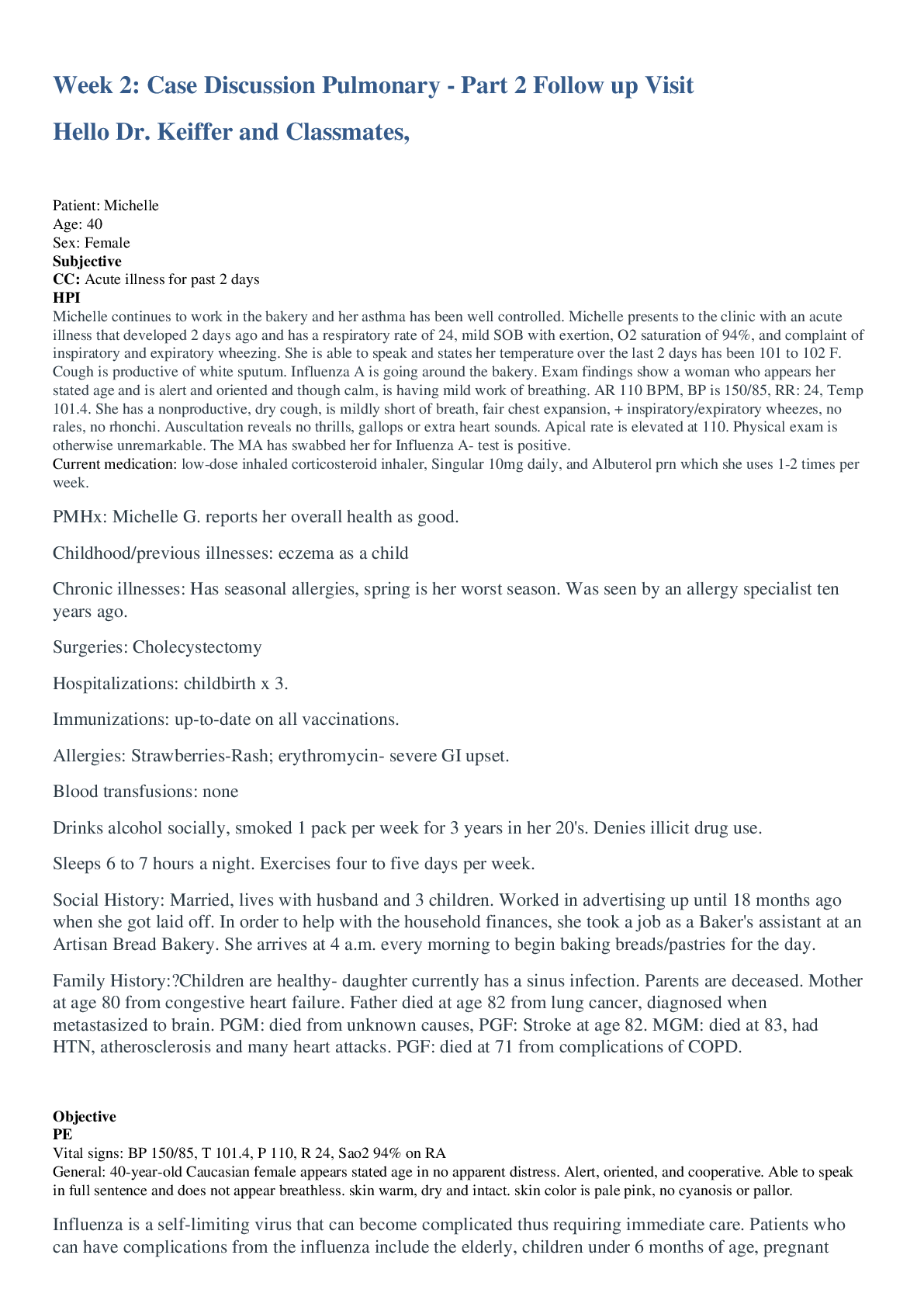


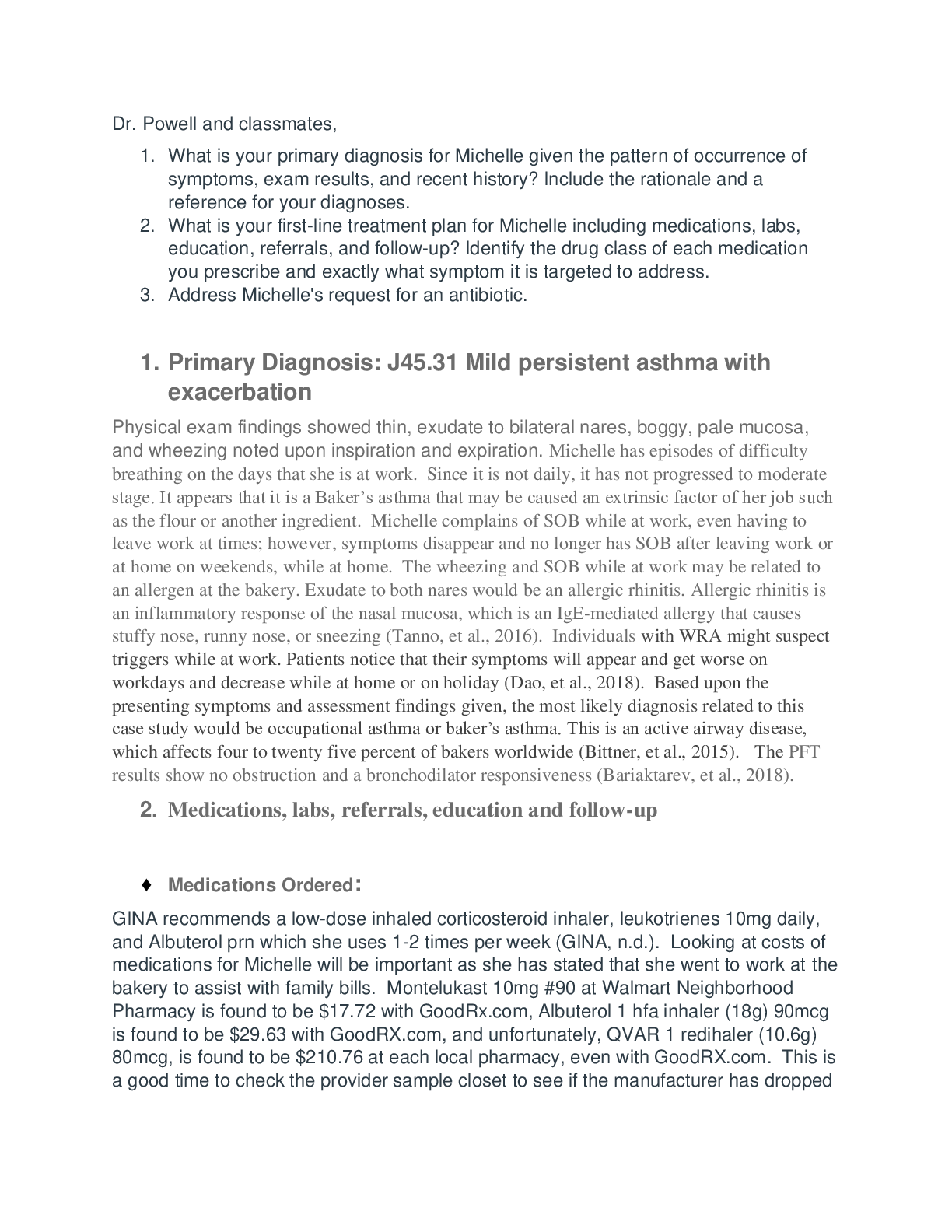


.png)
